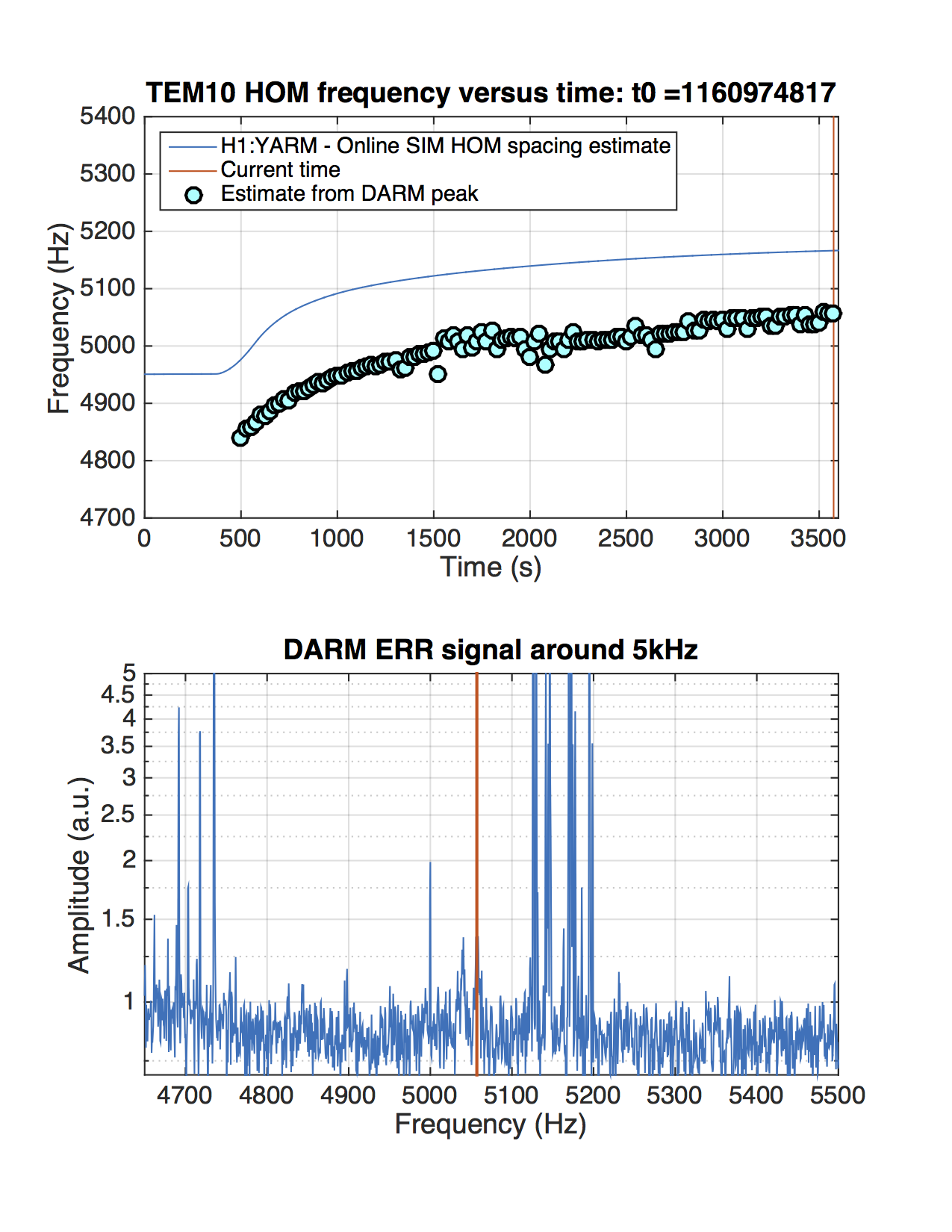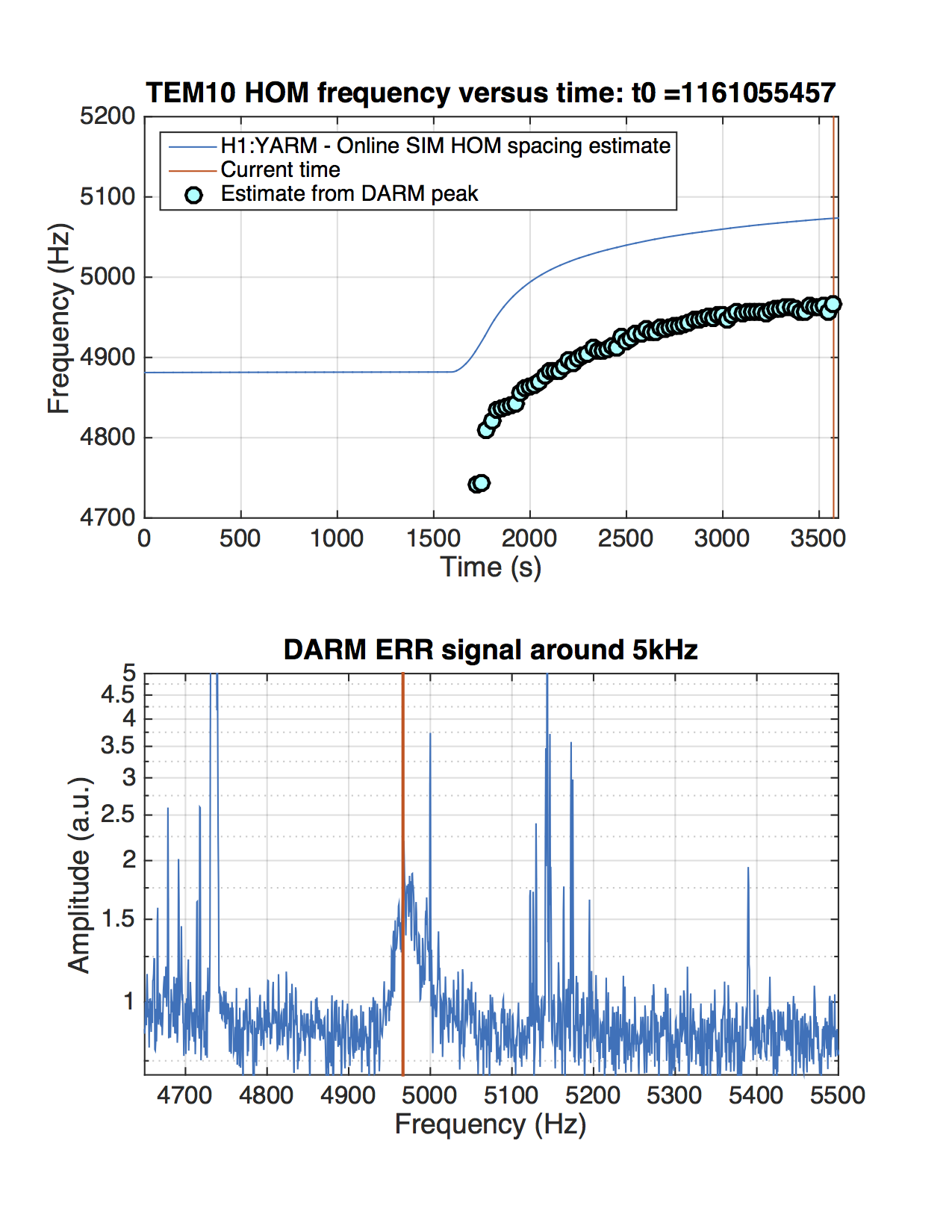- Guardian is now able to go to low noise at any power (see alog 30730)
- While the ISS isn't touched in the Guardian, its gain needs to be set for the final power:
25W: H1:PSL-ISS_SECONDLOOP_GAIN = 13dB
50W: H1:PSL-ISS_SECONDLOOP_GAIN = 7dB
- At 25W I did a quick SRCFF tuning (no filter - just gain to -0.55) (now in guardian). This produced a broad notch in the SCR coupling around 80ishHz. Attached is a residual coherence plot.
- Next I tried a number of things to attached the noise below 100Hz:
- Moved both compensation plates by 100urad in PIT and YAW. Moving them fast clearly produces scatter shelfs, but there was no obvious noide difference when the CPs were parked at a new location.
- Turned off the ESD bias on ETMX, ITMX and ITMY (no obvious effect)
- Added 20000cts of ESD EY offsets in pringle-shape to avoid zero-crossing (no obvious effect)
- Noticed that ITM L3 STATE REQUEST was 1 (LP off) - I am not sure the switch does anything on the ITMs, but I changed it to 2 (LP on) (no effect)
- Slightly lowered the HARD ASC loop bandwiths. The shelf just below 25 Hz is from the ASC and scales accordingly.
- Temporarily tunrned off the 40ish Hz cal lines to make sure they don't introduce non-linear noise (they don't).
- While I didn't close the SCR1_Y loop, I did look at the AS_A_RF36_I_YAW signal - it looked like a perfectly fine signal and we could use it again at 25W.
- Just remembered that we are still on the POP_X WFS (with POP beam diverter open). We should switch back to REFL.
Attached is a noise spectrum. Sensmon claims 60Mpc, but the 331Hz peak is actually 8% high, so I guess we are closer to 65Mpc.



















